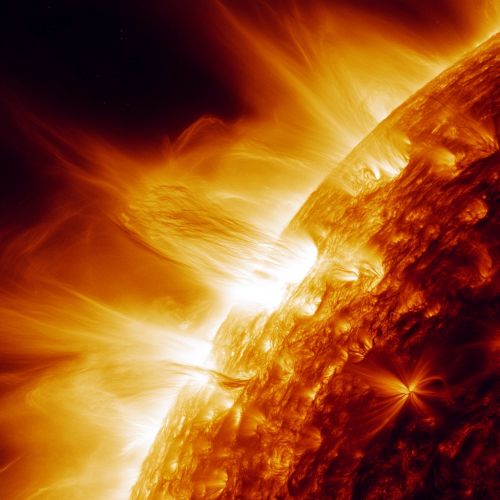Space Weather Prediction Center
Introduction
The Space Weather Prediction Center (SWPC) is a specialized division within the National Oceanic and Atmospheric Administration (NOAA) dedicated to monitoring and forecasting space weather phenomena. Space weather encompasses various conditions in space that can influence the performance and reliability of space-borne and ground-based technological systems. The SWPC provides critical data, forecasts, and alerts to help mitigate the impacts of space weather on communication systems, navigation, aviation, and power grids.
History
The origins of the SWPC can be traced back to the early 20th century when scientists began to understand the relationship between solar activity and geomagnetic disturbances on Earth. The center was formally established in 1965 as the Space Disturbance Forecast Center. Over the years, it evolved into the Space Environment Services Center before adopting its current name, the Space Weather Prediction Center, in 2007. The SWPC has continually expanded its capabilities, leveraging advancements in technology and scientific understanding to improve its forecasting accuracy.
Mission and Objectives
The primary mission of the SWPC is to provide timely and accurate space weather forecasts, warnings, and alerts to protect life and property and to enhance the nation's economic and national security. The center's objectives include:
- Monitoring solar and geophysical events in real-time.
- Developing and disseminating space weather forecasts and warnings.
- Conducting research to improve space weather prediction models.
- Collaborating with international partners and stakeholders.
Space Weather Phenomena
Space weather encompasses a range of phenomena primarily driven by the Sun. These include:
- **Solar Flares**: Sudden bursts of radiation from the Sun's surface that can disrupt radio communications and navigation systems.
- **Coronal Mass Ejections (CMEs)**: Large expulsions of plasma and magnetic field from the Sun's corona that can cause geomagnetic storms when they interact with Earth's magnetosphere.
- **Geomagnetic Storms**: Disturbances in Earth's magnetic field caused by solar wind and CMEs, affecting power grids, satellite operations, and communication systems.
- **Solar Energetic Particles (SEPs)**: High-energy particles emitted by the Sun that can pose radiation hazards to astronauts and high-altitude flights.
- **Auroras**: Natural light displays in Earth's polar regions caused by the interaction of solar particles with the atmosphere.
Monitoring and Data Collection
The SWPC utilizes a network of ground-based and space-based instruments to monitor space weather. Key instruments include:
- **Solar and Heliospheric Observatory (SOHO)**: A spacecraft that provides continuous observations of the Sun's outer atmosphere and solar wind.
- **Geostationary Operational Environmental Satellites (GOES)**: Satellites that monitor solar X-rays, energetic particles, and the geomagnetic field.
- **Advanced Composition Explorer (ACE)**: A spacecraft that measures solar wind and interplanetary magnetic field parameters.
- **Ground-based Magnetometers**: Instruments that measure variations in Earth's magnetic field.
Forecasting and Modeling
The SWPC employs sophisticated models to predict space weather events. These models incorporate data from various sources and simulate the behavior of the Sun-Earth system. Key models include:
- **WSA-Enlil Model**: A model that simulates the propagation of CMEs through the heliosphere.
- **Geospace Model**: A model that predicts geomagnetic storm impacts on Earth's magnetosphere.
- **Solar Wind Models**: Models that forecast the speed and density of the solar wind.
Impacts of Space Weather
Space weather can have significant impacts on various sectors:
- **Aviation**: High-frequency radio communications and navigation systems can be disrupted, particularly on polar routes.
- **Power Grids**: Geomagnetic storms can induce currents in power lines, potentially causing transformer damage and blackouts.
- **Satellites**: Increased radiation levels can damage satellite electronics and affect their operation.
- **Astronauts**: Exposure to high-energy particles poses health risks to astronauts on space missions.
Collaborative Efforts
The SWPC collaborates with numerous national and international organizations to enhance space weather prediction and response capabilities. Key partners include:
- **NASA**: Provides data from space missions and conducts research on space weather phenomena.
- **European Space Agency (ESA)**: Collaborates on satellite missions and data sharing.
- **International Space Environment Service (ISES)**: A global network of space weather service providers.
Future Directions
The SWPC is continually working to improve its forecasting capabilities and expand its understanding of space weather. Future initiatives include:
- **Next-Generation Satellites**: Launching advanced satellites with enhanced monitoring capabilities.
- **Improved Models**: Developing more accurate and comprehensive space weather models.
- **Public Awareness**: Increasing public and industry awareness of space weather risks and mitigation strategies.
See Also
- Solar Flare
- Coronal Mass Ejection
- Geomagnetic Storm
- Solar Energetic Particles
- Aurora
- Solar and Heliospheric Observatory
- Geostationary Operational Environmental Satellites
- Advanced Composition Explorer
- Magnetometer
- WSA-Enlil Model
- Geospace Model
- Solar Wind
Categories


